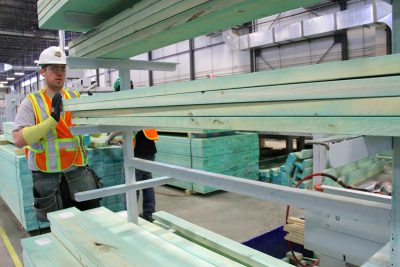- May 19, 2021
- Posted by: David Marshall
- Category: Manufacturing

We’re hearing so much about green manufacturing and sustainable manufacturing, and while they may not be required yet, they’re going to be. Even now, companies are no longer allowed to pollute and dump hazardous waste with the same impunity as they used to, and as more people learn to care about the environment — or at least, more executives learn to care about not going to jail — manufacturers are going to clean up their act.
Companies are starting to embrace the green manufacturing movement and look for ways to clean up their processes and waste. Some managers are rushing to embrace the movement altogether, and others are doing it, but are a little more hesitant about it.
Basically, if you have to work at embracing the movement, it means you probably don’t believe in it, and you may want to rethink some of your priorities.
That’s the thing with most movements, philosophies, and even relationships. You either believe in the thing and you do it, or you don’t believe in it and you don’t work at it very hard. It’s a difference between a person’s attitude and their practice.
In green manufacturing, it’s the difference between being a steward and greenwashing.
You see this in organizations that are run by professional managers, not by leaders. Leaders are visionaries who work to make something happen, even if it’s a little bit every day. Managers — the non-visionaries — will wait until they get whacked by some kind of fine or penalty, and then they’ll change. Grudgingly.
Vision Starts at the Top
 Any time a company wants to start a new practice, adopt a new program, or embrace a new philosophy, they always need to get buy-in from the executive leadership because that’s where the vision starts (and ends).
Any time a company wants to start a new practice, adopt a new program, or embrace a new philosophy, they always need to get buy-in from the executive leadership because that’s where the vision starts (and ends).
It starts at the top because the leadership needs to hold the managers accountable to make sure things happen.
For example, when I first joined Robroy, one of the first things that happened was the company got hit with a multi-defendant lawsuit. The plaintiff claimed that I was polluting predominantly African-American homes. I was a co-defendant and not the main defendant, but there were a lot of co-defendants.
What the plaintiff’s attorneys wanted to do was mine the insurance policies of all the manufacturers in the Gilmer area. In those days, there were no pollution exclusion clauses in insurance policies. (Today, you couldn’t get an insurance policy without that exclusion clause.)
What the plaintiff’s attorneys used to do in those days is go on the EPA’s website and look at violations companies had been hit with. They would sort by zip code and use that as the basis for their lawsuits.
The plaintiff’s attorney presented to the court the fact that Robroy had 50 violations that were registered on this website, so how can Robroy not be a polluter?
We realized that our violations were more a function of neglect than anything else. We’d forget to do something or forget to turn something off, and boom! Violation.
I realized the objective was to never be on the radar because then no one could ever come after us. It just made more sense to clean everything up in order to avoid additional violations, and that was one reason to clean up and stop polluting.
But most importantly, I believed that it was the right thing to do and we needed to stop polluting on general principle.
There were originally six co-defendants in this suit, and four of them went bankrupt. I was the last man standing at the end of it.
But more importantly, we ultimately resolved all the environmental issues that were there. I ensured that I put in place the technology that could alert the enterprise if we were to go outside the boundaries of what had to be reported to the EPA. That way, we never polluted anyone, we never got in the EPA’s crosshairs, and we never got sued for environmental issues again.
Embracing green manufacturing is becoming even more important because these days, CEOs are actually being hit with jail time for their environmental violations. So if nothing else, you should embrace your personal freedom.
I’ve been a manufacturing executive, as well as a sales and marketing professional, for a few decades. Now I help companies turn around their own business, including pivoting within their industry. If you would like more information, please visit my website and connect with me on Twitter, Facebook, or LinkedIn.
Photo credit: David Dodge, Green Energy Futures (Flickr, Creative Commons 2.0)

